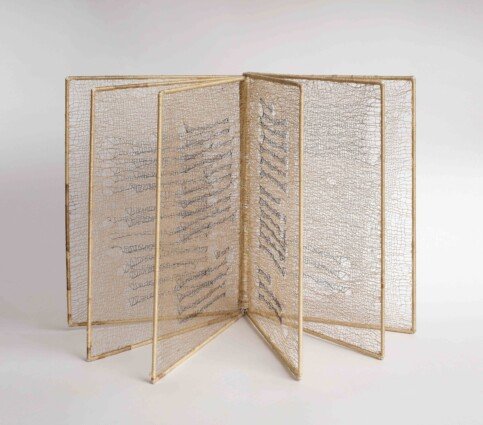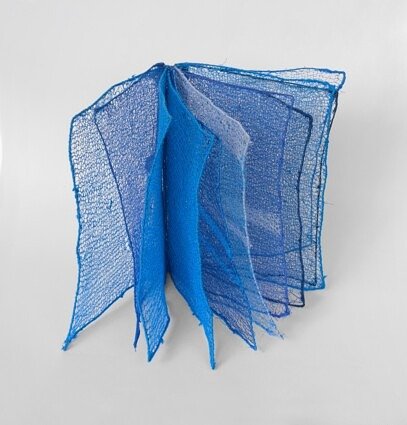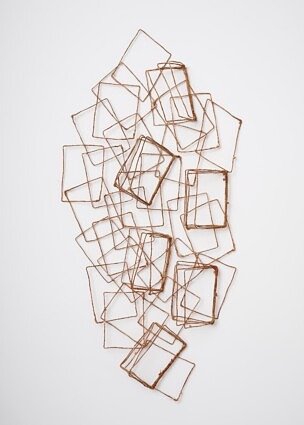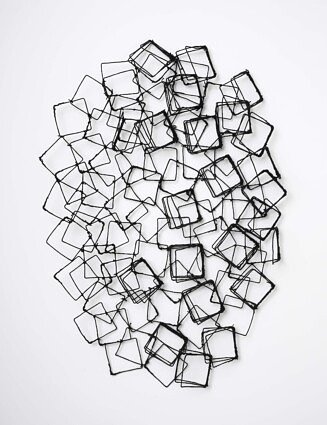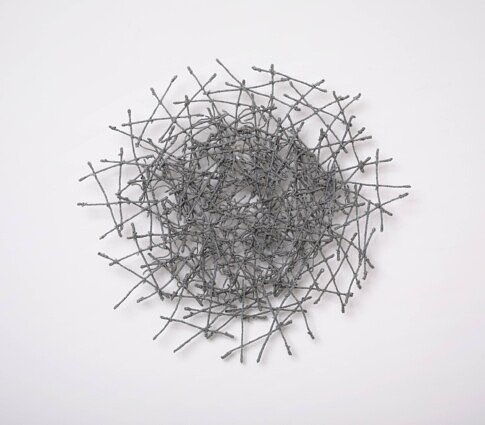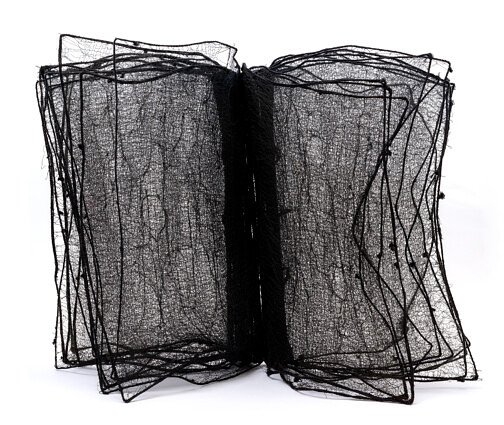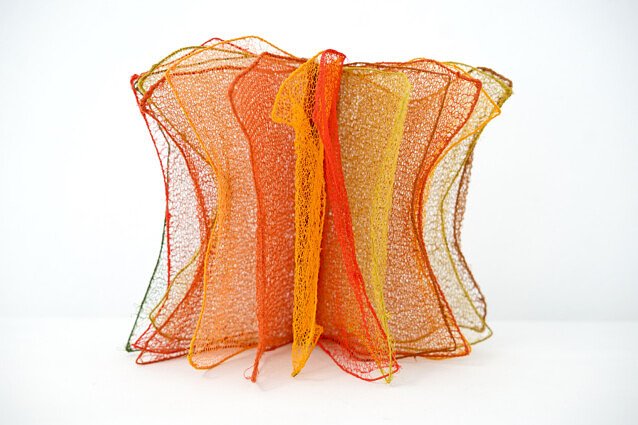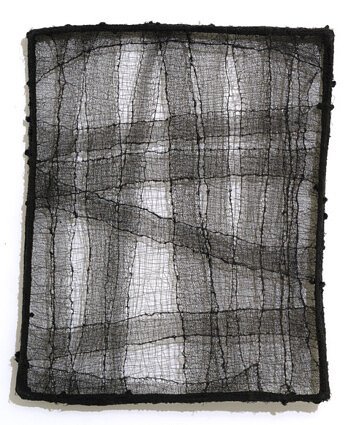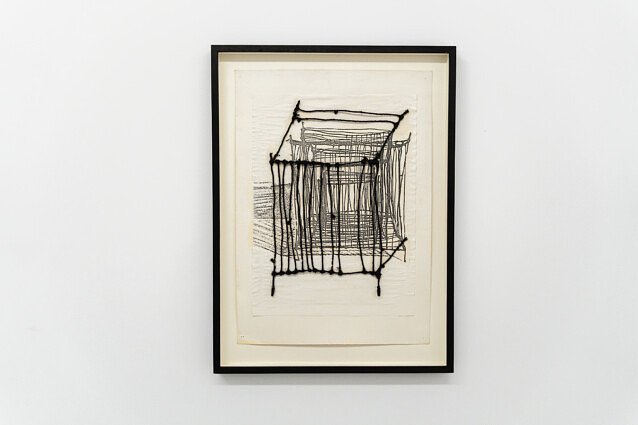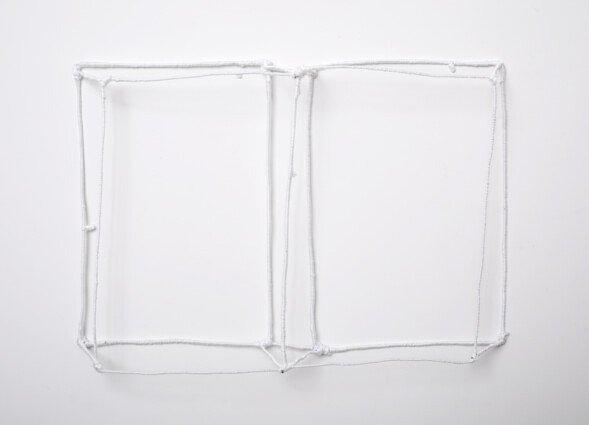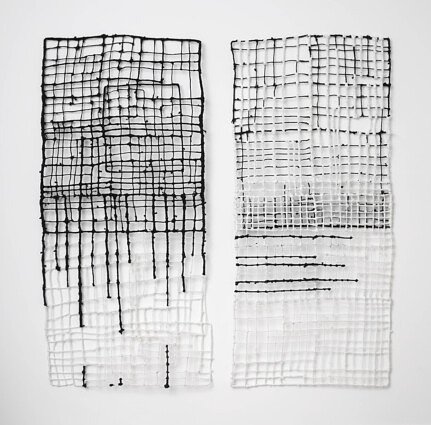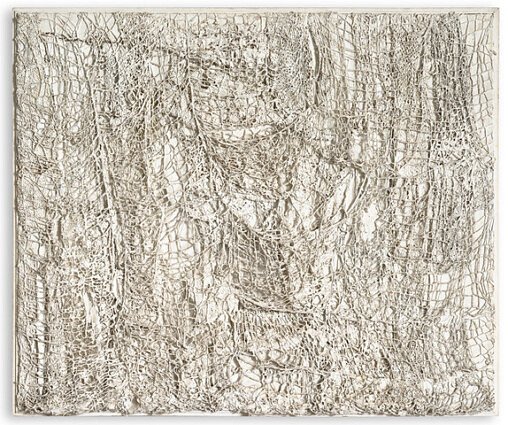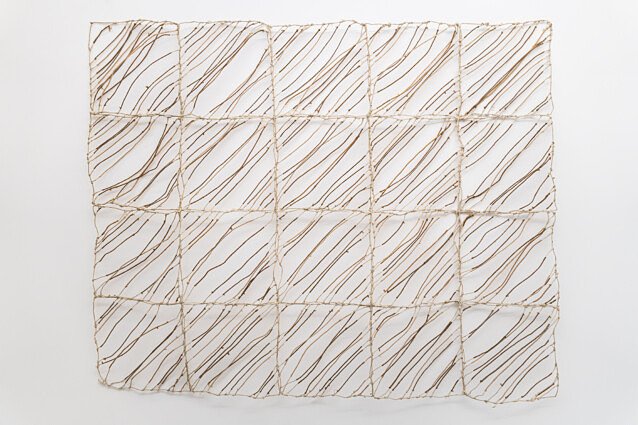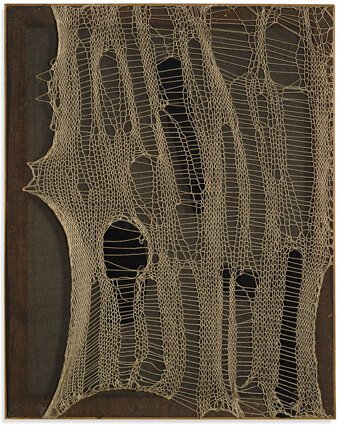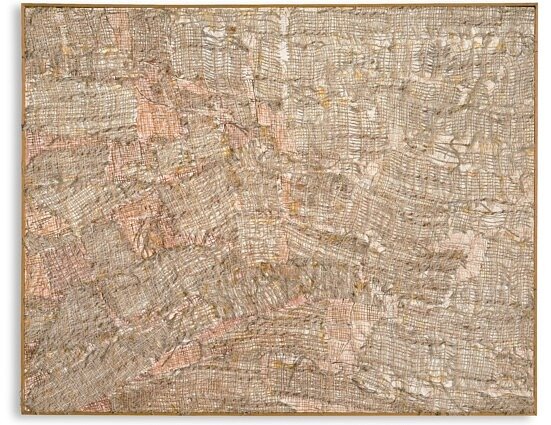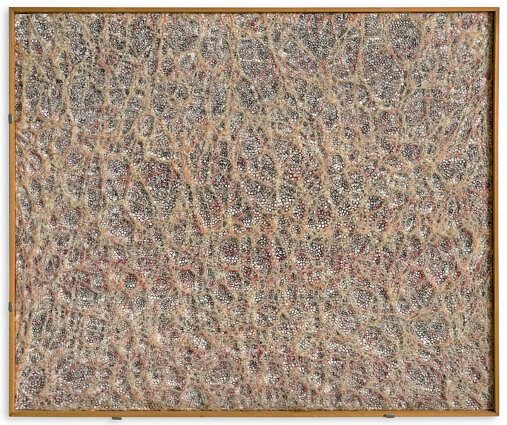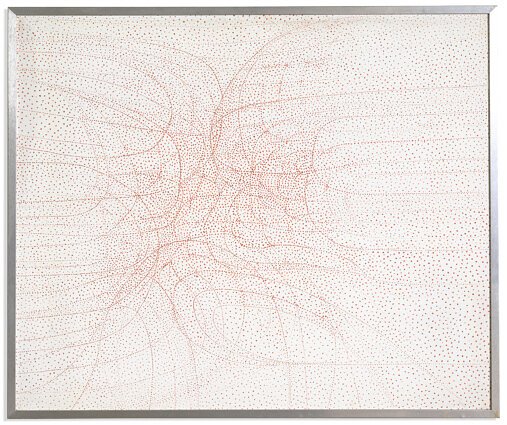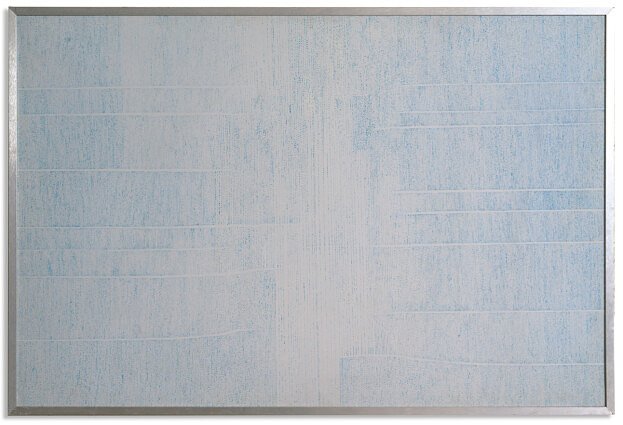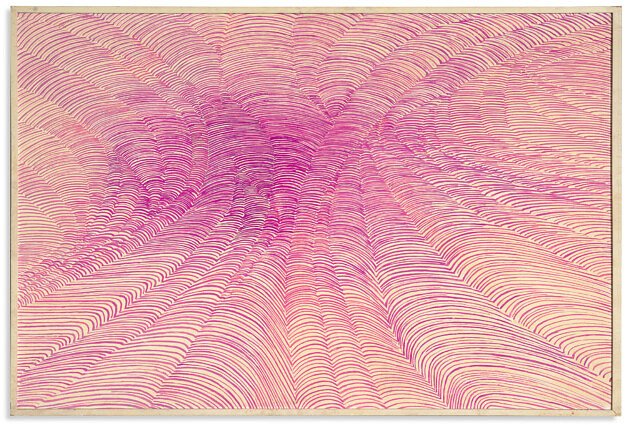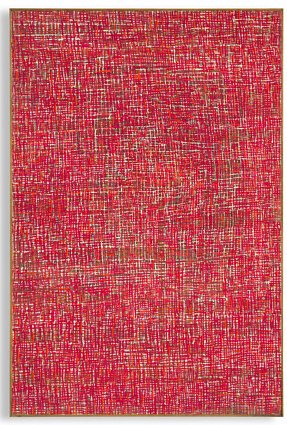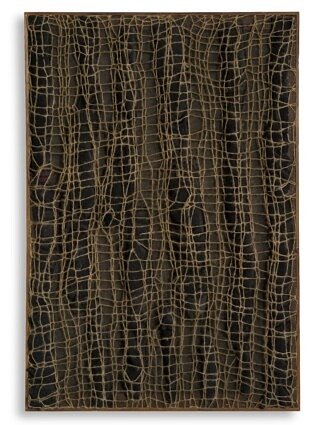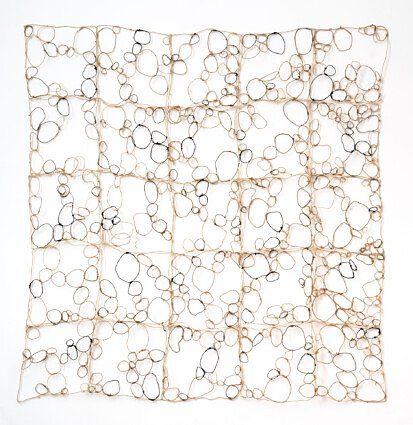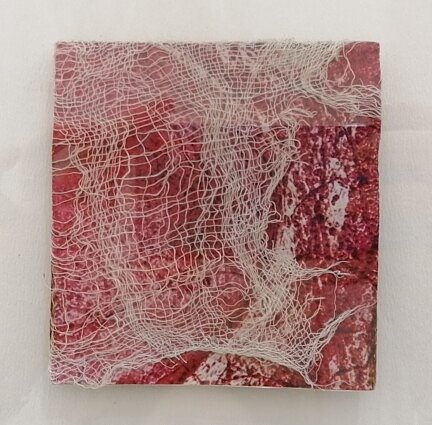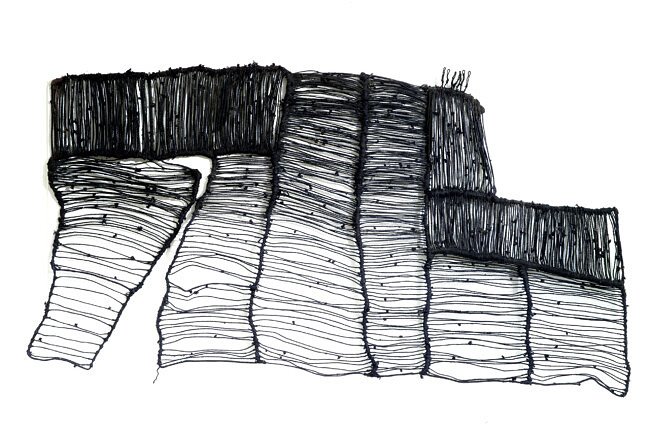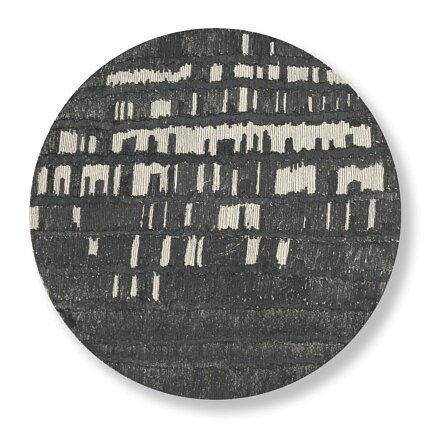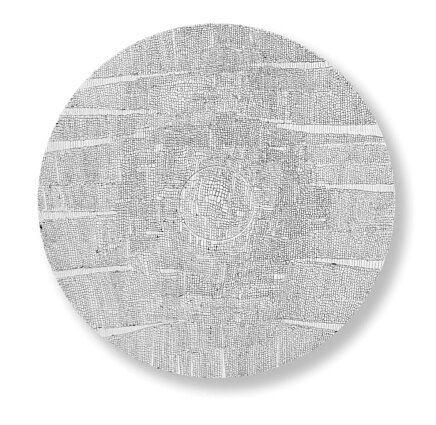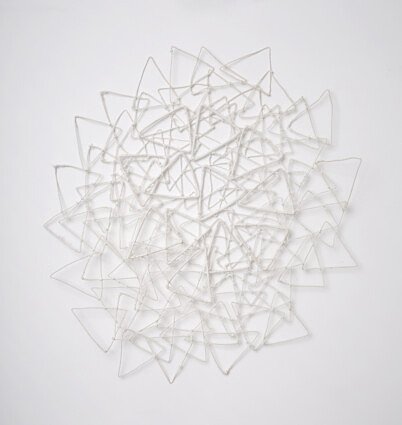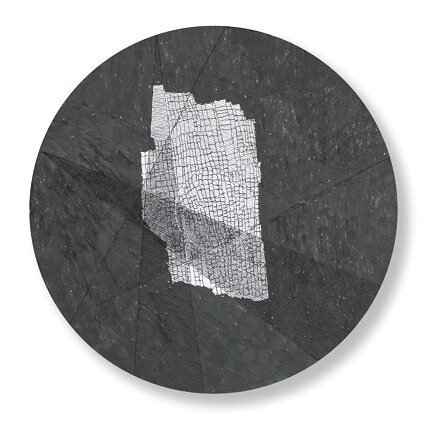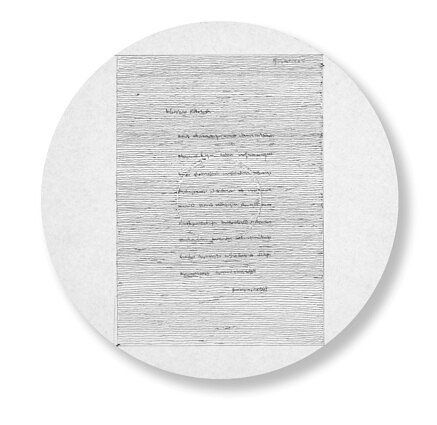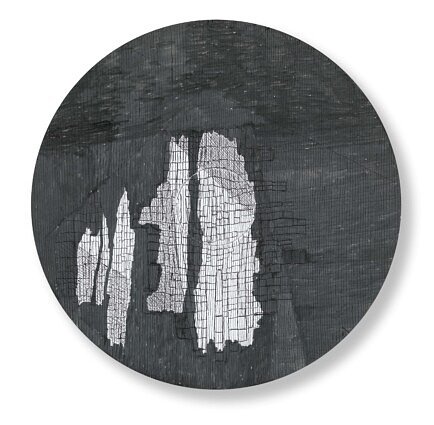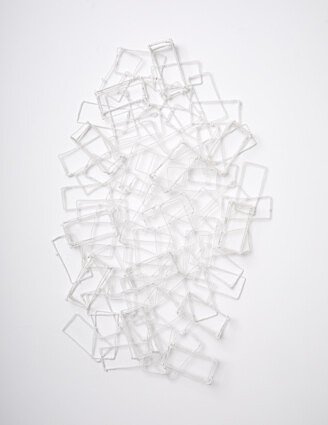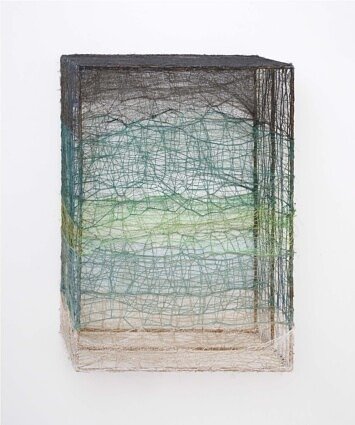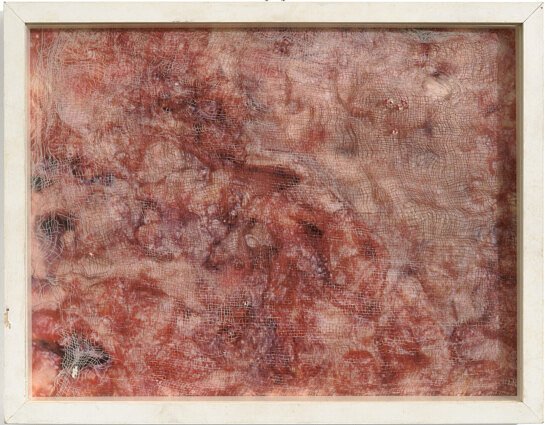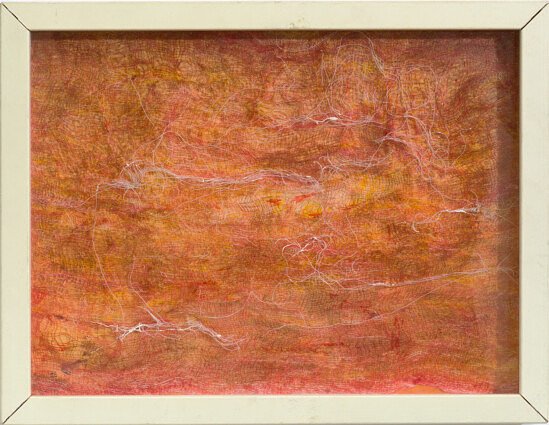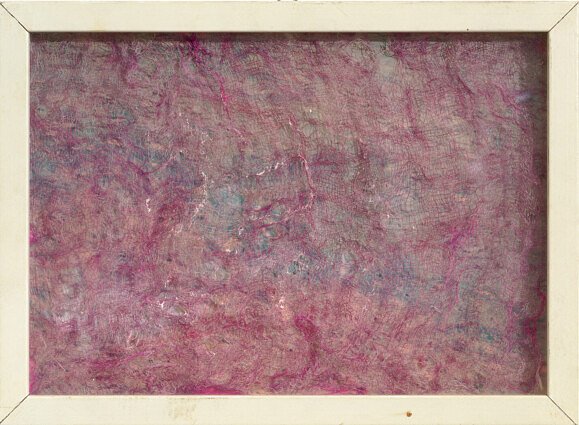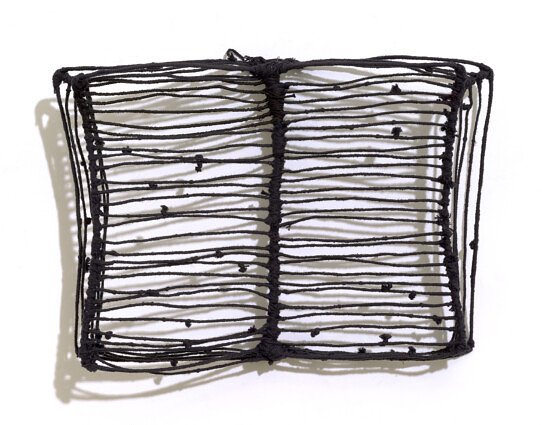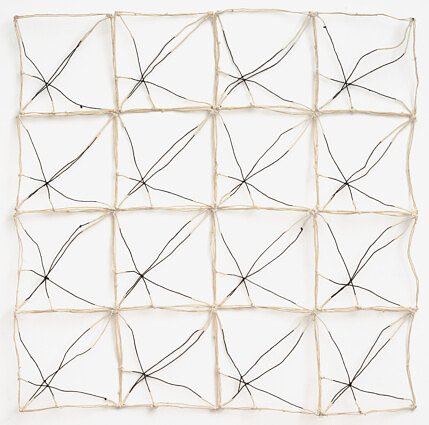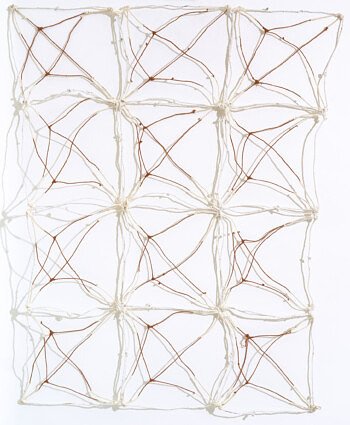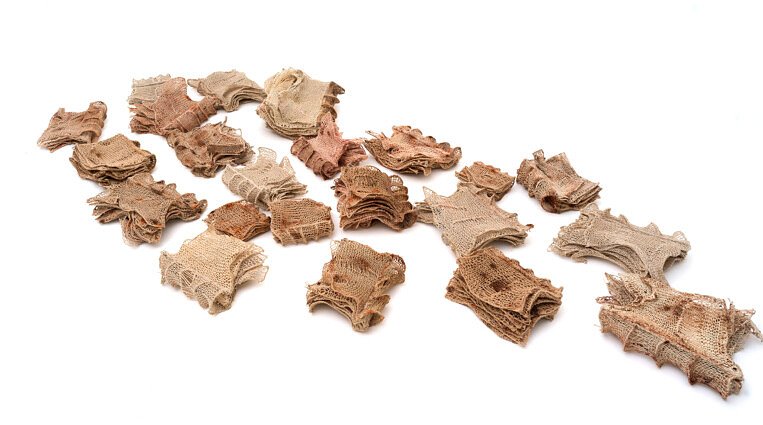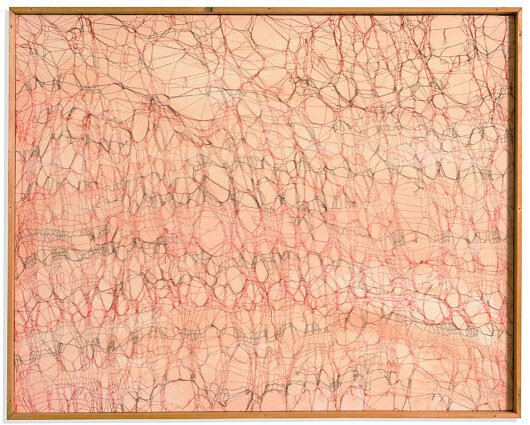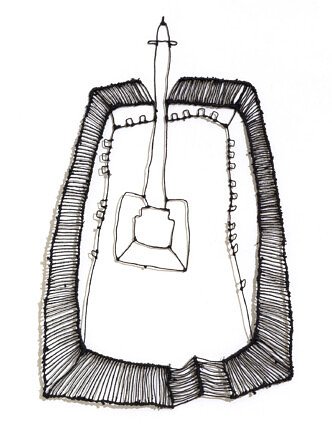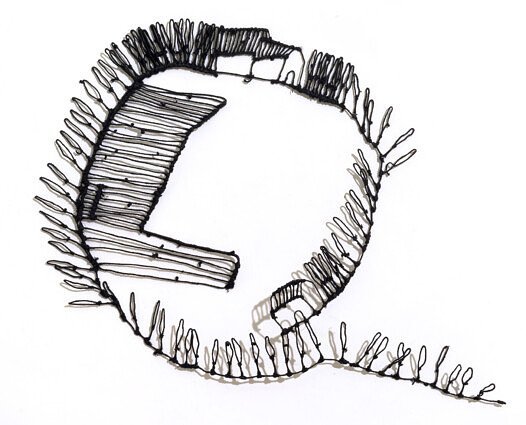Franca Coen
Sonnino
Biography
Franca Coen was born into a family of Jewish origin on February 13, 1932, in Rome, where she lives and works. The start of her artistic career can be traced back to her encounter with Maria Lai, who lived in on the floor below her apartment, in the Balduina neighbourhood in Rome. Rather than a chance encounter, their relationship was definitely a convergence, dictated by a richly charming and meaningful alchemy. It led Sonnino to follow Lai’s suggestion to use “her hands to make useless objects, not useful things”, as if it were a knowledge-transforming mantra. Thus, over time she transformed typical female and domestic activities such as knitting, which she loved, through a process that challenges the concept of utility, bringing into question the relationship of perception of subject and object and the conventions with which we are accustomed to reading the reality that surrounds us.
Her first works, consisting of paintings of lines and densely woven thread, resembling weaving, were purely the result of her own artistic vision. During the seventies, thread, which was initially a subject and ‘auxiliary’ element in her paintings, became her privileged medium, definitively replacing her paintbrush, from the end of the decade onwards. In the eighties, Sonnino began working on three-dimensional objects and installations, presented in numerous exhibitions, in which thread, almost always cotton, was wrapped around a wire structure. From those dawning moments to today, Franca Sonnino has had almost thirty solo exhibitions and has featured in about two hundred group exhibitions all over the world. During the eighties, after having held numerous solo shows in different Italian cities (Milan, Naples, Imola, Savona, Bari and Rome), she was present in another fundamental collective exhibition for women, Filo, Genesi e Filogenesi, curated by Mirella Bentivoglio at the Galleria Arte Duchamp in Cagliari. In 1982 her works travelled abroad for the first time, first to Barcelona, for the collective ‘Fil’Sofia. El concepte del fil en la dona-artista’ curated by Bentivoglio at Metronom, and then to Australia, at the Quentin Gallery in Perth and Sydney. In the nineties Sonnino participated in numerous collective shows, including the Photoidea exhibition, curated by Bentivoglio, at Jonkers Education Art Center, New York.
In 2000, the entry ‘Franca Sonnino’ appears in the fifth volume of Storia dell’Arte Italiana del Novecento encyclopaedia. In 2019 the works of Franca Sonnino and Maria Lai were exhibited together at the Textile Museum, Busto Arsizio, in Maria Lai and Franca Sonnino Masterpieces of Italian Fibre Art. In the same year the Repetto Gallery in London organized an exhibition called Threading Spaces – Nedda Guidi, Elisabetta Gut, Maria Lai, Franca Sonnino, curated by Paolo Cortese.

Critical text
With a skein of iron wire and a few spools of cotton thread, Franca Sonnino sets out to rebuild the world. Its microcosm is defined by a subtle, continuous, sometimes subdued sign, always intended to capture the deep essence of reality, not the contingent fact, the intimate substance of the structure, not the changing appearance of the superstructure. With the result that the sign’s landscapes, its ‘still life’s, its mosaics draw on a condition of immateriality, of precariousness, which if on the one hand suggests a feeling of lightness, on the other hand reveals a proven aptitude to penetrate beyond the skin of the experience in order to get hold of the core of it. Thus, using a sign dried to the point of the unbelievable, Sonnino incredibly becomes a sculptor, shaping the void, besieging the space with a dense network of tensions, within which one can imagine the accumulation of sensations that originated it. Destructuring the real to see it again in a different form, poetically motivated but at the same time plausible, removing consistency from the prosaic nature of things and nevertheless proposing them again in a credible form. This is the work of the artist, and the play of shadows that his forms undertake constitute the irrefutable litmus test of their existence, the sure sign of the immanence of poetry beyond disbelief, the certification of his obstinate will to be beyond the everyday and the ephemeral. If in the past the link with reality, albeit reduced to the bone and extolled for a long time, was read fairly easily, today instead emerges in the series of “mosaics”, an even more marked tension to abstraction, to the adoption of regular modules, of forms geometric, of an articulated syntax but based on seriality. It is not an escape towards the irrational; it is not the abdication from communion with the things of the world, but only a change due to the tools with which the artist looks at them. It is as if he had brought his eye closer to the lens of the microscope, in order to enjoy the perfect harmony, but by no means artificial, inherent in the structure of a crystal or in the spider’s web.
_Lia De Venere
